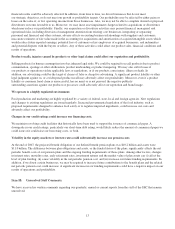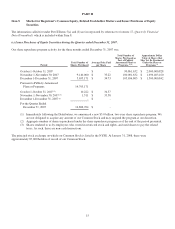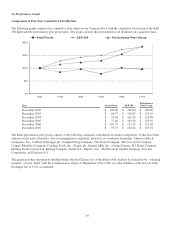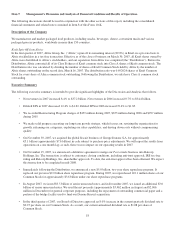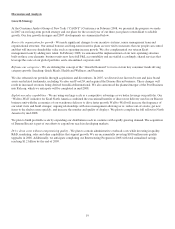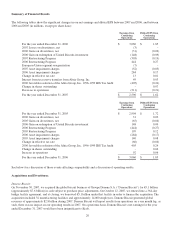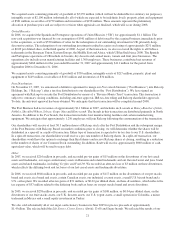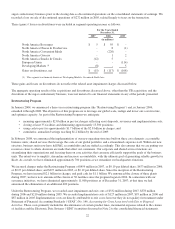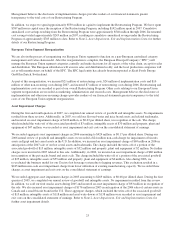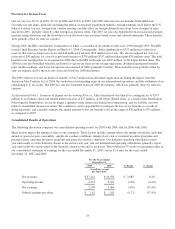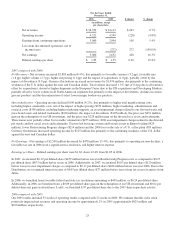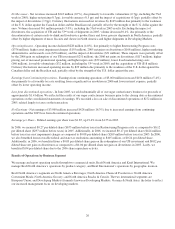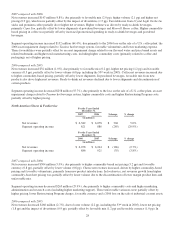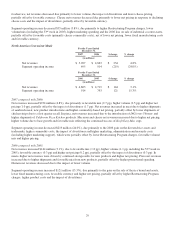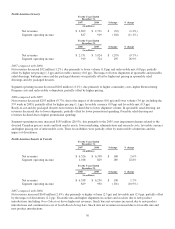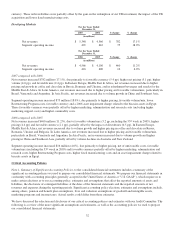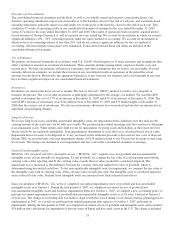Kraft 2007 Annual Report Download - page 38
Download and view the complete annual report
Please find page 38 of the 2007 Kraft annual report below. You can navigate through the pages in the report by either clicking on the pages listed below, or by using the keyword search tool below to find specific information within the annual report.Management believes the disclosure of implementation charges provides readers of our financial statements greater
transparency to the total costs of our Restructuring Program.
In addition, we expect to spend approximately $550 million in capital to implement the Restructuring Program. We have spent
$387 million in capital since the inception of the Restructuring Program, including $142 million spent in 2007. Cumulative
annualized cost savings resulting from the Restructuring Program were approximately $540 million through 2006. Incremental
cost savings totaled approximately $243 million in 2007, resulting in cumulative annualized savings under the Restructuring
Program of approximately $783 million to date. Refer to Note 2, Asset Impairment, Exit and Implementation Costs, for further
details of our Restructuring Program.
European Union Segment Reorganization
We are also in the process of reorganizing our European Union segment to function on a pan-European centralized category
management and value chain model. After the reorganization is complete, the European Principal Company (“EPC”) will
manage the European Union segment categories centrally and make decisions for all aspects of the value chain, except for sales
and distribution. The European subsidiaries will execute sales and distribution locally, and the local production companies will
act as toll manufacturers on behalf of the EPC. The EPC legal entity has already been incorporated as Kraft Foods Europe
GmbH in Zurich, Switzerland.
As part of this reorganization, we incurred $21 million of restructuring costs, $24 million of implementation costs and $10
million of other non-recurring costs during 2007, and incurred $7 million of restructuring costs during 2006. Restructuring and
implementation costs are recorded as part of our overall Restructuring Program. Other costs relating to our European Union
segment reorganization are recorded as marketing, administration and research costs. Management believes the disclosure of
implementation and other non-recurring charges provides readers of our financial statements greater transparency to the total
costs of our European Union segment reorganization.
Asset Impairment Charges
During the first and fourth quarters of 2007, we completed our annual review of goodwill and intangible assets. No impairments
resulted from these reviews. Additionally, in 2007, we sold our flavored water and juice brand assets and related trademarks,
and incurred an asset impairment charge of $120 million, or $0.03 per diluted share, in recognition of the sale. The charge,
which included the write-off of the associated goodwill of $3 million, intangible assets of $70 million and property, plant and
equipment of $47 million, was recorded as asset impairment and exit costs on the consolidated statement of earnings.
We recorded aggregate asset impairment charges in 2006 amounting to $424 million, or $0.17 per diluted share. During our
2006 annual review of goodwill and intangible assets we recorded a $24 million non-cash charge for impairment of biscuits
assets in Egypt and hot cereal assets in the U.S. In addition, we incurred an asset impairment charge of $69 million in 2006 in
anticipation of the 2007 sale of our hot cereal assets and trademarks. The charge included the write-off of a portion of the
associated goodwill of $15 million, intangible assets of $52 million and property, plant and equipment of $2 million. No further
charges were incurred in 2007 related to this sale. Additionally, in 2006, we incurred an asset impairment charge of $86 million
in recognition of the pet snacks brand and assets sale. The charge included the write-off of a portion of the associated goodwill
of $25 million, intangible assets of $55 million and property, plant and equipment of $6 million. Also during 2006, we
re-evaluated the business model for our Tassimo hot beverage system due to lagging revenues. This evaluation resulted in a
$245 million non-cash asset impairment charge from lower utilization of existing manufacturing capacity. We recorded these
charges as asset impairment and exit costs on the consolidated statement of earnings.
We recorded aggregate asset impairment charges in 2005 amounting to $269 million, or $0.08 per diluted share. During the first
quarter of 2005, we completed our annual review of goodwill and intangible assets. No impairments resulted from this review.
In addition, we sold our fruit snacks assets during 2005 and incurred an asset impairment charge of $93 million in recognition of
the sale. We also incurred asset impairment charges of $176 million in 2005 in anticipation of the 2006 sales of certain assets in
Canada and a small biscuit brand in the U.S. These aggregate charges, which included the write-off of the associated goodwill
of $13 million, intangible assets of $118 million and asset write-downs of $138 million were recorded as asset impairment and
exit costs on the consolidated statement of earnings. Refer to Note 2, Asset Impairment, Exit and Implementation Costs, for
further asset impairment details.
23


